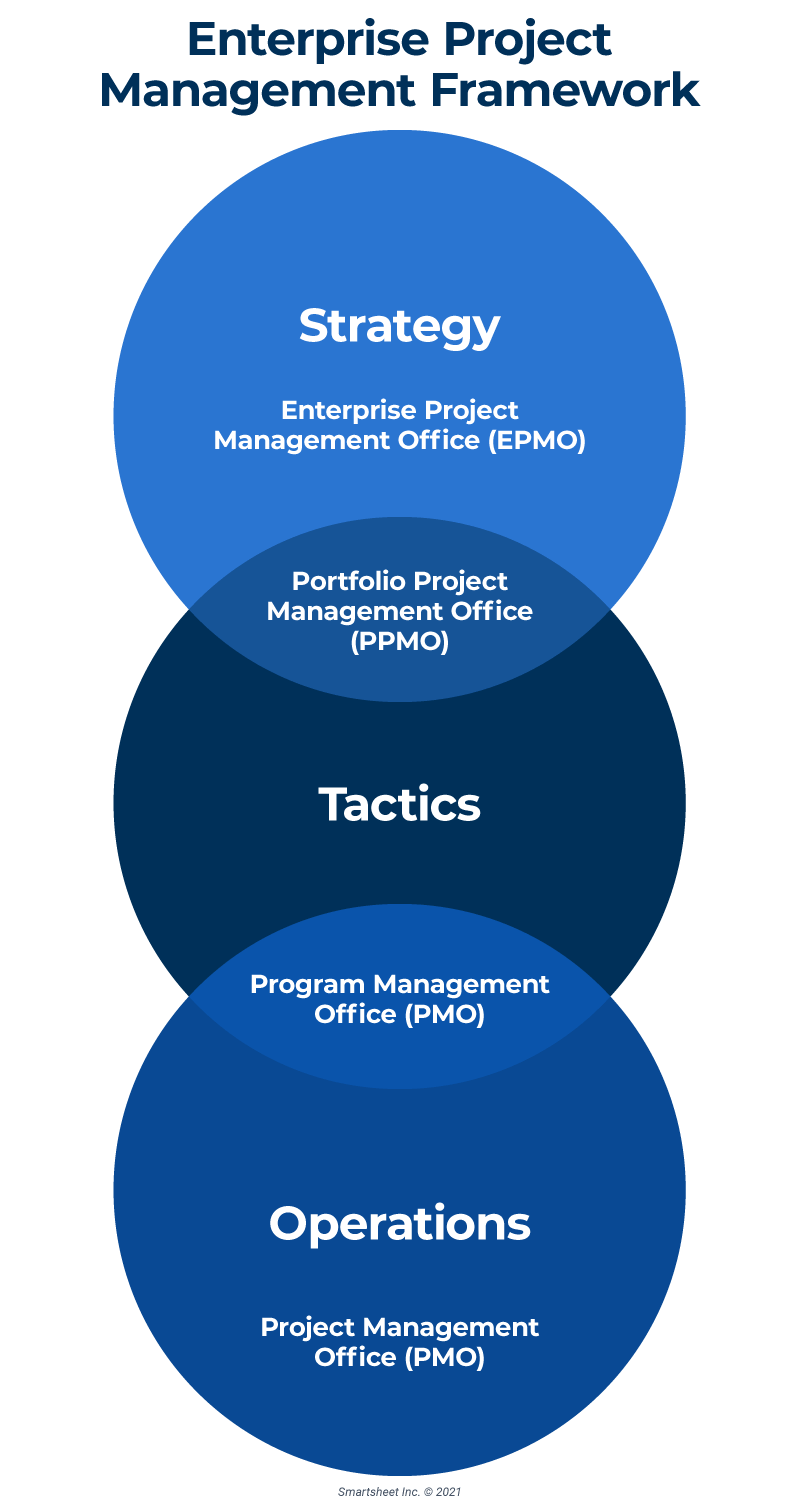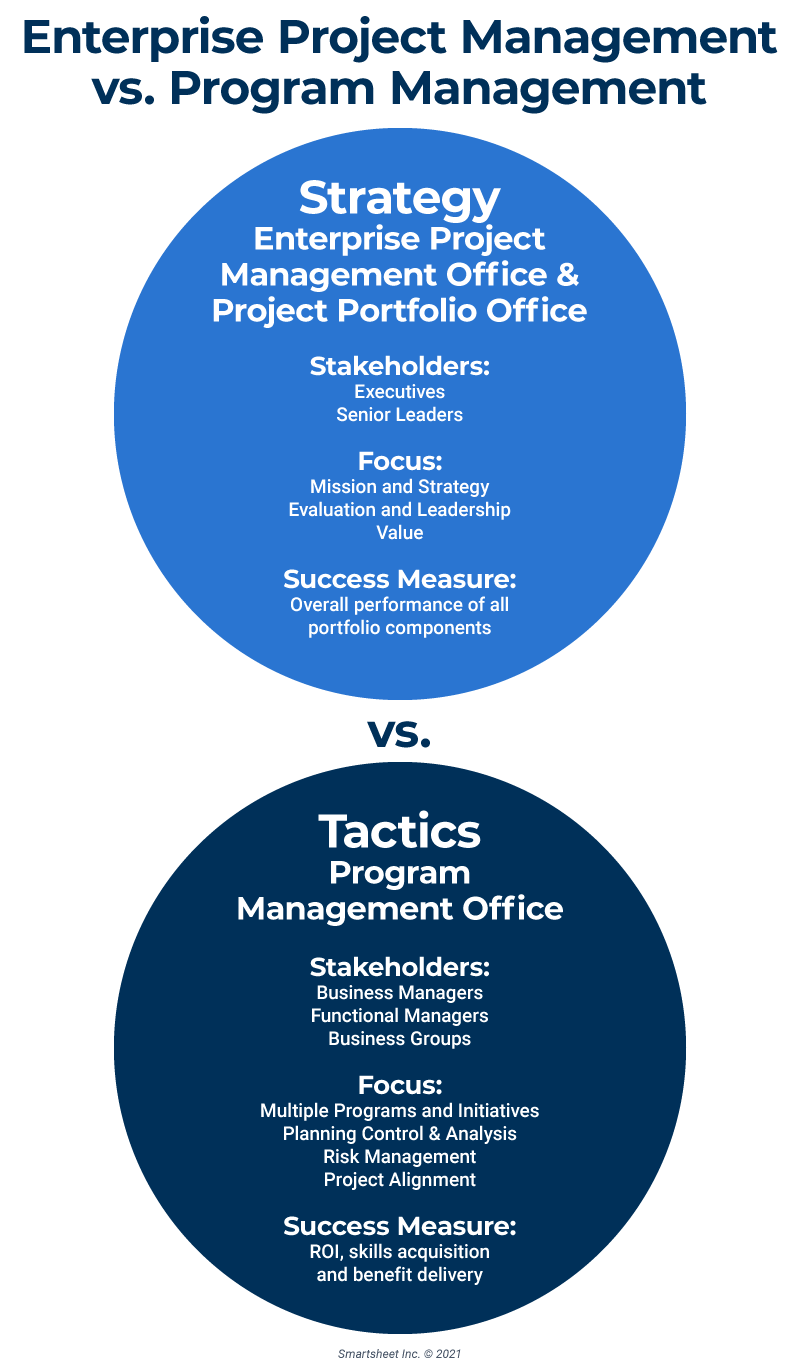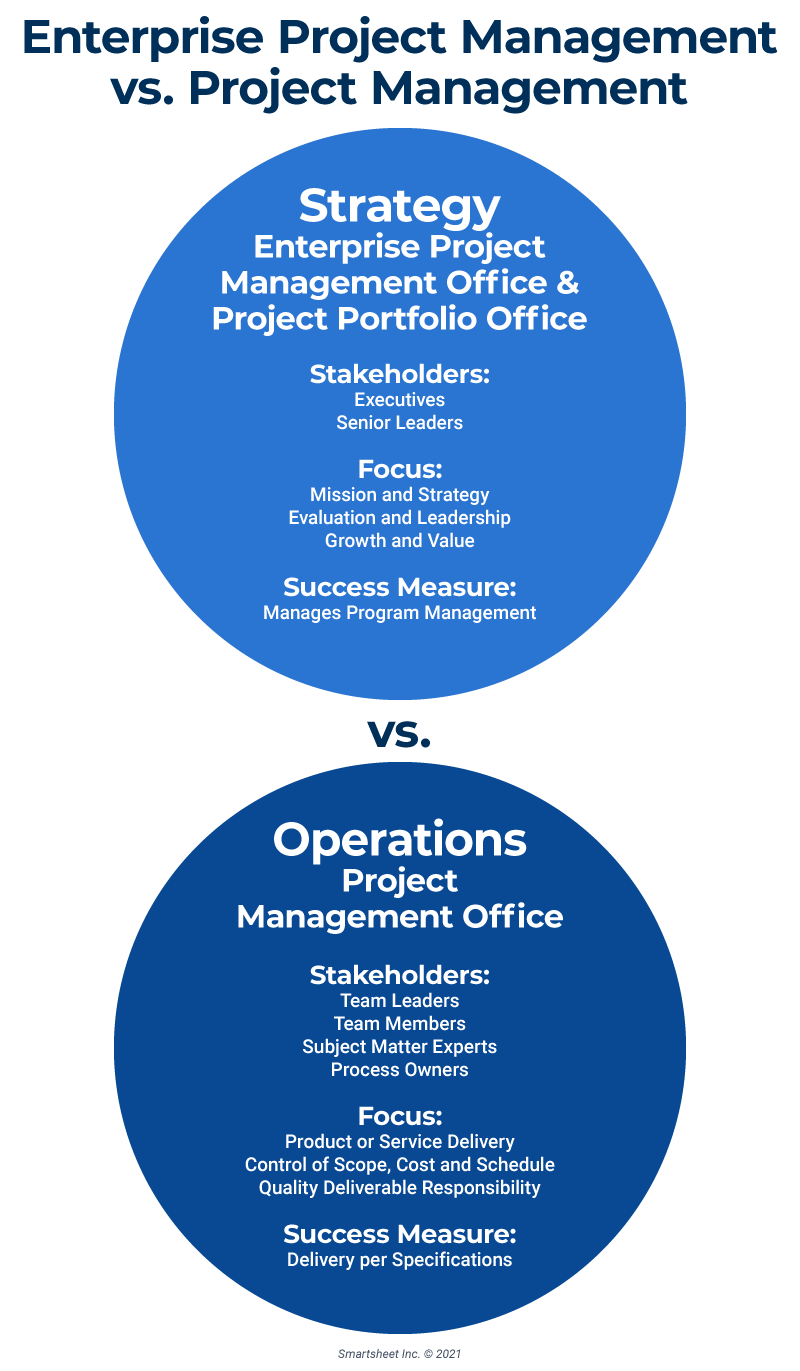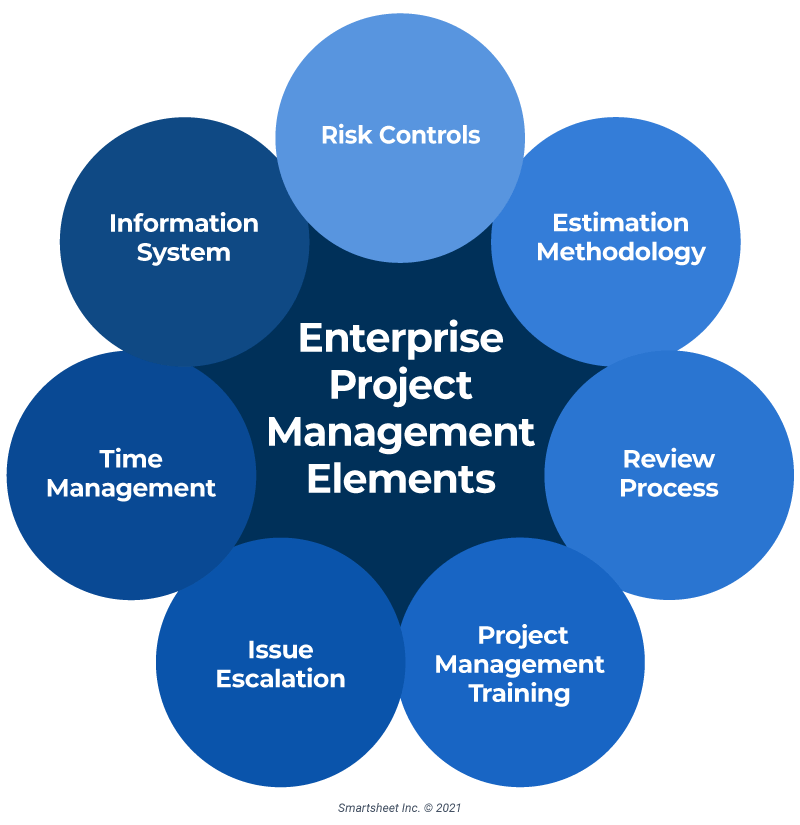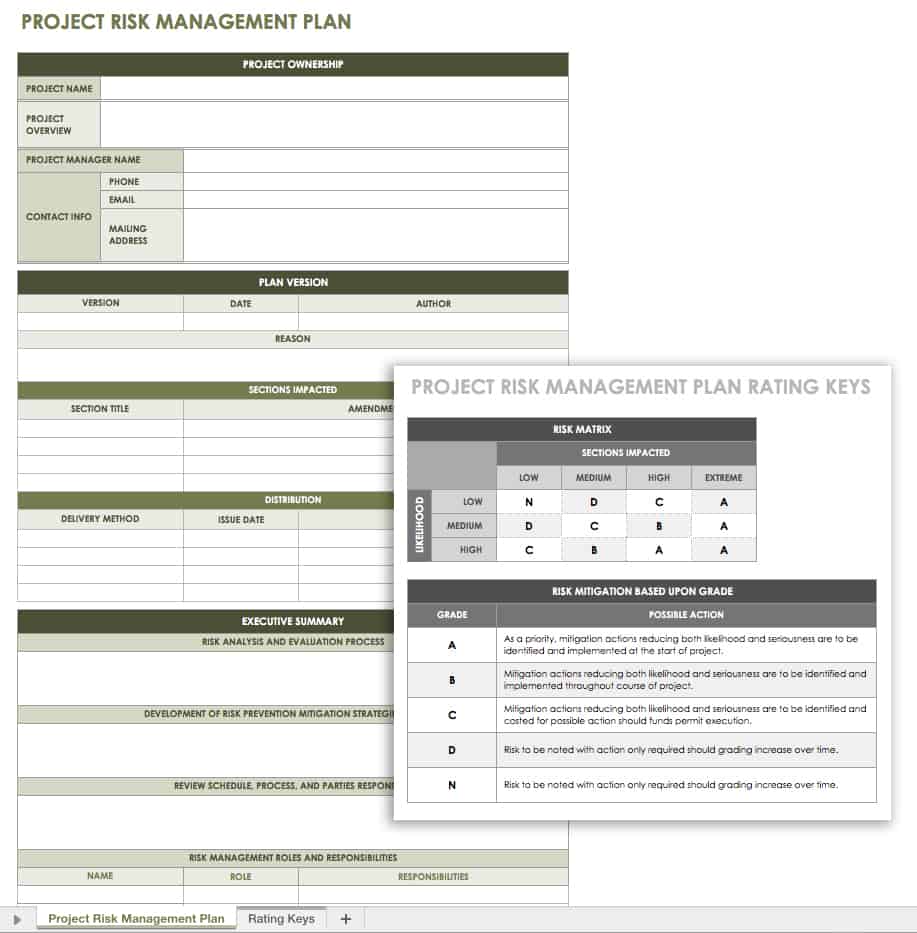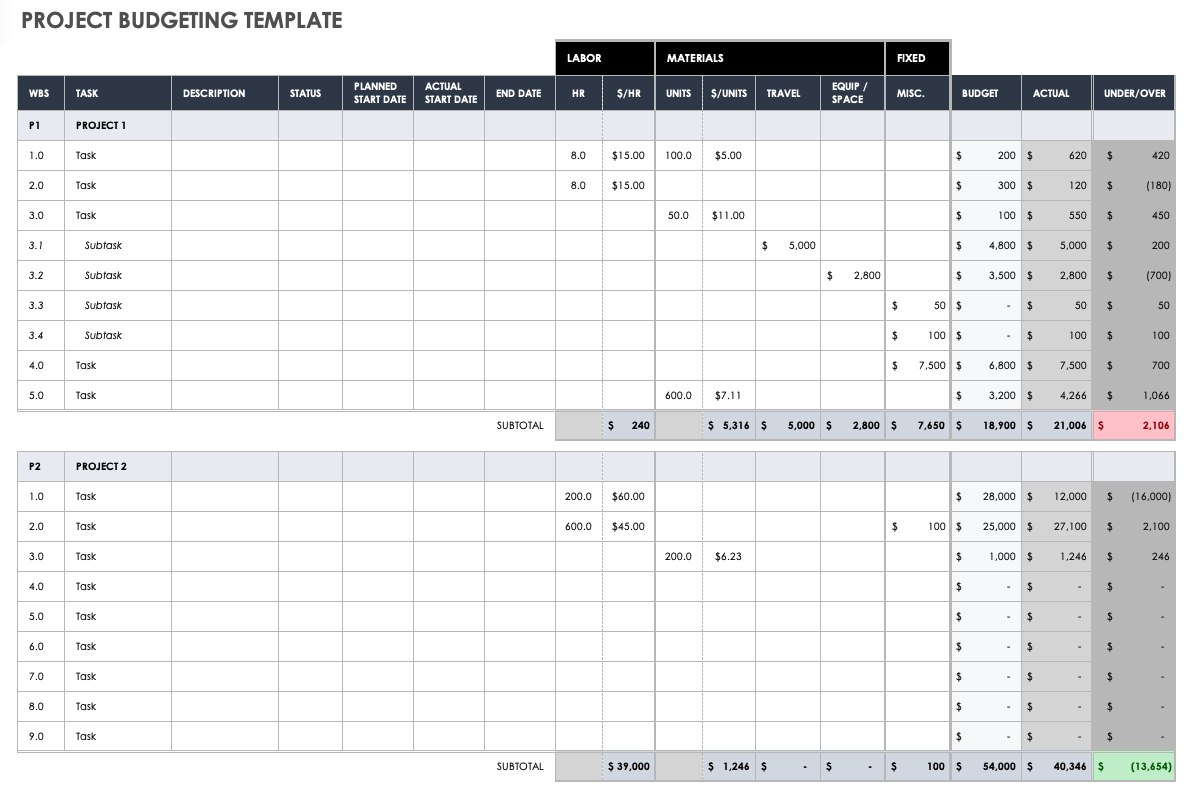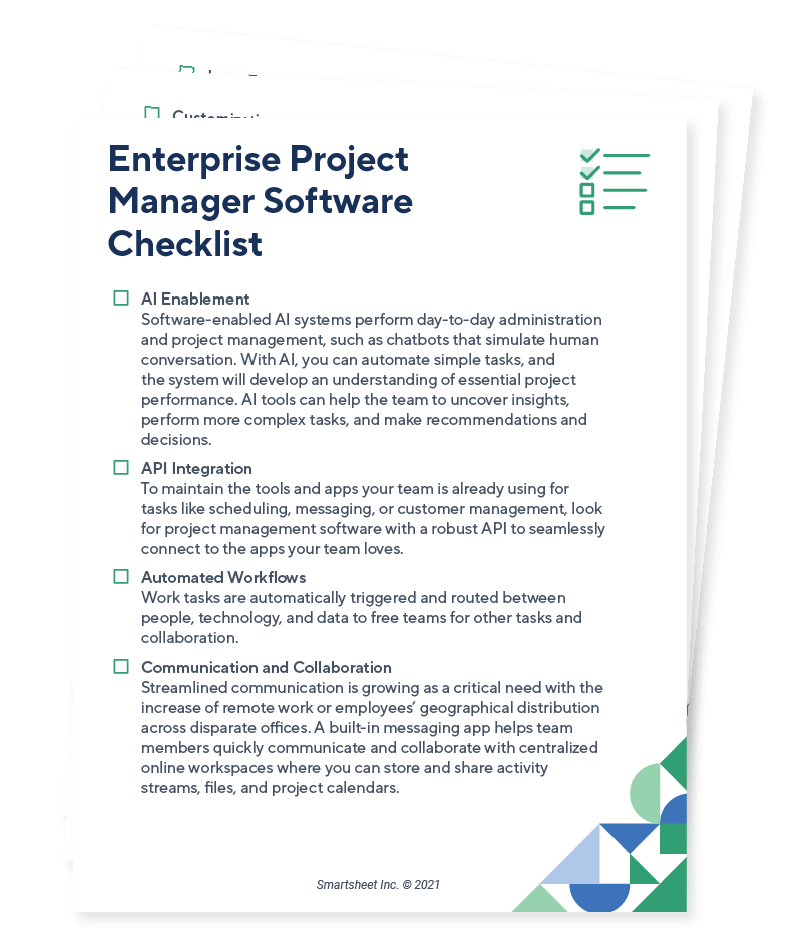What Is Enterprise Project Management?
Enterprise project management refers to the business process and mindset required to administer multiple projects company-wide. The process strategically aligns portfolio, program, and project management, with the goal of creating synergies that drive value.
“Enterprise project management is about getting to desired outcomes as efficiently as possible under any conditions,” says Jason Scott, author of The Irreverent Guide to Project Management, and Principal Consultant, Founder, and CEO of 120VC, a project management services firm that provides human solutions to drive innovation and change. “You have to be agile (with a lowercase ‘a’) to get things done to reach those outcomes.”
Project Management Guide
Your one-stop shop for everything project management

Ready to get more out of your project management efforts? Visit our comprehensive project management guide for tips, best practices, and free resources to manage your work more effectively.
Enterprise Project Management Framework
An enterprise-level project management framework is a combination of business strategy, governance, and management methods. Structures at strategic, tactical, and organizational levels work together efficiently to boost value creation.
“Frameworks like those from the Project Management Institute (PMI) offer guidelines, not hard and fast rules,” says Scott. “Organizations — and the people within the organization — need to be willing to change and transform to deliver necessary and expected results with enterprise project management.”
The PMI’s Pulse of the Profession Report 2021 report calls for an elegant, strategic approach to projects and details the emergence of the “gymnastic enterprise” that blends governance and structure with flexibility and a lens of change management, particularly in digital transformation. The report covers the shift to virtual work due to the pandemic as a pivot point for high-functioning organizations, focusing less on how people work and process and much more on outcomes.
The value of implementing enterprise-wide project management is that you’re able to act quickly enough to stop losses or capitalize on a potential window of opportunity.
Understanding Enterprise Project Management Frameworks
Strategy and Enterprise Project Management: Effective enterprise project management operates from strategy and top-down governance that encompasses all program and project implementation. Enterprise project management is still evolving as a practice, and therefore requires a cultural shift and a move away from siloed departments. The reality is that projects, from mergers and acquisitions to major IT initiatives, have company-wide impacts on performance and budgets.
Despite the pressing need for initiatives to fulfill company missions, most initiatives and projects are failure-prone. PMI’s 2018 Pulse of the Profession report found that every 20 seconds, more than $1 million goes to waste. This result, which is true of businesses all over the globe, is the business case implementation.
- The Enterprise Project Management Office (EPMO): The enterprise project management office is a business function and practice that focuses on strategic business objectives: management, growth, core differentiation, competitive direction, value, and finance management. The EPMO works with and reports to C-level officers and senior leadership. The office provides governance, project portfolio management best practices, tools, mentoring, and process standardization. Enterprise project management provides visibility into all projects, up to the top executive level, to ensure value delivery and elimination of waste to speed corporate initiatives to a beneficial conclusion.
- The Project Portfolio Management Office (PPMO): The project portfolio management office establishes methodologies and processes that identify and select value-maximizing project portfolios. PPMO responsibilities include working with executives to specify portfolio objectives and define submission data for project proposals. The office determines and announces the mechanism, algorithm, or model used to estimate the value of ongoing and proposed projects. Based on strategy and data, the office recommends project priorities and the composition of the project portfolio and decides how to allocate available project resources. You can find best practices and practical pathways to PPMO success in our guide to enterprise project portfolio management.
Tactics and Program Management: The tactical level is responsible for performance, governance, control, compliance, risk management, and program management. Program managers report to the PPMO, which works to improve processes in a multiproject environment.
The Program Management Office (PMO): The program management office reports to senior executives and project sponsors. Program management controls multiple projects in support of programs that are usually interdependent and involve various company departments. Strategic PMOs help control the portfolio, prioritization, and strategy based on directives from the level of the organization. The office coordinates resources from multiple departments, generates reports for executives and project sponsors, identifies project dependencies, and coordinates projects.
How Is Enterprise Project Management Different from Program Management?
Enterprise project management is mission-, strategy-, and value-driven, while program management is a tactical effort. EPM offices handle multiple programs that align with corporate strategy and business value.
The C-suite and senior leadership are responsible for setting the vision and strategy for every level of the company. By contrast, the program management office works at the tactical level. The PMO provides program direction, risk analysis and resolution, performance metrics, and other data. PMOs also ensure compliance with project management standards.
Operations and project management activities focus on human resources, procurement, product management, marketing, sales and customer service, production, supply chain, and logistics.
For this domain, the PMO supports administration for the project management team and regulates project-related management processes. The PMO is responsible for ensuring accurate time and cost tracking, status reports, and the delivery of approved projects on time and within budget.
Project management is a complex and valuable practice area with many moving parts. Look into best practices and objectives by reading an overview of project management.
How Is Enterprise Project Management Different from Project Management?
Enterprise project management focuses on strategic objectives and the delivery of business plans. The goal of project management is to provide quality deliverables within specified scope, cost, and schedule.
Program management offices are responsible for delivering quality products or services within scope, on time, and within budget. EPM stakeholders include team leaders, team members, subject matter experts, and process owners.
Roles and Responsibilities in Enterprise Project Management
The roles and responsibilities in enterprise project management vary from organization to organization. In a mature EPM environment, the CEO or COO is the top level of command, and they are supported by a chief project officer and enterprise project manager.
Here is a brief overview of high-level roles in enterprise project management:
- Chief Executive Officer (CEO) or Chief Operations Officer (COO): Depending on organizational structure, the CEO or COO is the ultimate reporting authority. CEOs are change champions and the driving forces behind a culture that supports organizational agility and the embrace of new technologies. In a 2019 Forbes Insights Survey of executives, 92 percent consider the program management office to be a transformational force for adopting disruptive technology. And nearly 90 percent of executive respondents believe that the EPMO is a critical element in future digital transformations.
- Chief Project Officer (CPO): CPOs are board-level executives. CPOs sponsor and oversee significant projects, portfolios, and programs to achieve strategic business objectives. They evaluate risks and ensure they are well-balanced with rewards. One of the crucial aspects of the position is to drive efficiencies and linkages between projects, including ensuring that each project has an effective leader. The CPO also is in charge of implementing appropriate project management methodology and controls project scope. Overall, the position is charged with achieving excellence in execution.
- Enterprise Project Manager: Enterprise project managers are in charge of making sure all projects within an organization meet expectations based on the direction of the CEO and CPO. Enterprise project managers aren’t necessarily involved with the details of particular projects, but rather direct projects to align with top-level goals. At the same time, each project in the portfolio needs to be completed on time and under budget.
Major players in the transformation to enterprise-wide project management include the following:
- EPM Executive Owner: Every successful project must have a leader who is the voice and champion of the project. The executive owner must set the vision and direction for the organization's enterprise project management solution and advocate for the EPM vision and leadership among their peer group.
- EPM Sponsor: The sponsor represents the bridge between the high-level vision and direction and the day-to-day planning and execution to achieve enterprise project management.
A Closer Look at What an Enterprise Project Manager Does
Enterprise project managers zero in on the central problem to solve. With input from sponsors and stakeholders, the enterprise project manager decides how to approach the problem by identifying objectives, scope, and tasks to deliver the desired outcome.
Responsibilities of an enterprise project manager include the following:
- Maintain Vision: Successful enterprise project managers keep the corporate vision, goals, and underlying purpose top of mind. The manager devotes ample time to gain a thorough understanding of the project’s value and ensures that all stakeholders comprehend it.
- Market Understanding: Enterprise project managers need to have a strong overview of the market environment that impacts each project and use that knowledge to determine project merit, organization, and oversight.
- Providing a Framework for Project Activities: Based on strategy directives, enterprise project managers provide leadership with a clear structure for team members to follow in order to complete projects.
- Recruit Participants: With all the skill or project needs, enterprise project managers select internal and external vendors. They also hire new talent to complete projects with the greatest possible efficiency.
- Prevent Duplication and Recognize Opportunities: Enterprise project managers identify when projects conflict or duplicate effort since they have an overview and familiarity with initiatives.
- Negotiate with Executives: When personnel, budgets, and timing — or in cases where the project itself — needs reconsideration, the EPM will work with executives and business managers to get projects done.
- Identify Required Resources: Once organized, the enterprise project manager reviews all requirements. Once needs are clarified, the enterprise project manager will align all internal and external human, material, and services with budgetary restrictions.
- Set Milestones and Coordinate Activities: To deliver projects and portfolios on time and budget, project managers provide clarity for all team members. Tasks include oversight or assignment of roles, deliverables, and workable plans that all stakeholders and staff can understand.
- Ensure Team Member Contribution and Benefits: Team member engagement goes hand in hand with vision. Enterprise project managers’ leadership encourages everyone to work in concert to a single goal to perform at the highest possible level.
- Mediate Conflicts: Project and portfolio development is a complex process that involves immense human and monetary resources. The level of complexity requires well-honed management skills to prevent conflict. Conflict resolution techniques include win-win resolution where all parties achieve their goals and reach a satisfactory compromise. Above all, enterprise project managers provide continuous feedback and are flexible in avoiding conflict before it begins.
- Leverage Lessons Learned: Successful project managers review critical data during projects and afterward identify potential issues and improve future projects. Apply evaluations of project failures, successes, and lessons learned in order to refine processes for continuous improvement.
There are many steps, inputs, and partnerships involved in delivering project value. Learn how to take control by understanding the phases of project management.
Elements of Enterprise Project Management
There are seven components or elements involved in enterprise project management: risk control and analysis, estimating, reviewing methodologies, escalating issues, time management, information systems, and training and mentoring.
These elements are described in detail below.
1. Risk Control and Analysis
A well-constructed risk analysis methodology will help you decide how much risk is acceptable in light of potential project rewards. Risk management is vital for organizations of every size. Learn about best practices, and get templates and more in our guide to enterprise risk management implementation.
Project Risk Management Plan Template
Download Project Risk Management Plan Template
This template is easy to customize based on project details, risk tolerance, and mitigation processes. Add needed data and calculations; also, note roles and responsibilities, risk identification, and a risk register for analysis and monitoring.
2. Structured Estimation
Ideally, management will approve a published estimation process and methodology for project managers to follow in a large organization. Then the project manager should explain and defend the estimated time and budget to management before moving forward. Three-point estimates that include the optimistic, likely, and pessimistic views also provide a stringent basis for contingency estimates.
3. Project Reviews
Enterprise project management calls for reviews at multiple points during the project lifecycle. PMI recommends commitment, startup, progress, and close-out reviews. The intent of these reviews is to provide attention through checks on standards, status, and issues, as well as form risk mitigation plan updates. Additionally, reviews support the project managers to provide a value-add consultation.
4. Project Management Coaching
Coaching accelerates project managers’ competence and decision-making abilities, as well as reduces dropout rates. The coach’s role is to act as a mentor, help during critical periods, and offer assistance in high-risk decision-making. A strong coach will help the project manager understand the need for skill growth and build their development plan.
5. Escalated Issue Management
Projects often consume more effort and time than necessary, or they fail due to an inability to spot and take on issues as they arise. Issues from different projects that share core issues are analyzed, and results are used to prioritize system or organizational changes, departmental quality initiatives, or other challenges that prevent progress. It can be helpful to have a checklist for process reviews.
6. Time Tracking and Accounting
This is one of the most critical — and most difficult — aspects of project management. Time tracking and accounting are essential for current and historical reporting and understanding project ROI. Create estimation guidelines, based on past projects and managed at the project manager level, and have the project manager review them and check overspending time and budget. Project management software is invaluable in making time tracking and accounting more manageable and shareable, and in creating a database in which you can develop dollar and time estimation guidelines.
Project Budgeting Template
Download Project Budgeting Template
Deliver projects on time and under budget with this budgeting template, which allows you to track labor, fixed costs, materials, and other elements. Easily manage additional spending and provide insights into budget variance, so all team members and stakeholders are informed with this practical template.
7. Software Systems
Businesses can use enterprise project management software to gauge progress, handle scope creep, and reliably deliver projects that match business goals. Tools are available as separate tools for niche buyers or complete suite solutions.
What Are Enterprise Projects?
Transformation and change-oriented companies lean into enterprise projects, which are large-scale projects that impact the entire organization and include hundreds (or even thousands) of stakeholders. Companies with a global footprint increasingly adopt enterprise projects to improve company culture, create shareholder value, and deliver quality products.
Here are a few examples of enterprise projects:
- Tesla, Inc.: Since 2008, Tesla’s bold vision has been to “accelerate the world’s transition to sustainable energy.” The global scope of this vision is an example of proactive systems thinking and strong executive leadership. Despite maintaining regional divisions, Tesla adheres to enterprise project management guidelines and is centralized, and the entire organization is controlled through decisions made by a central group or team. The method is to apply EPM and software development principles to short development cycles in order to create groundbreaking electric vehicles. Tesla employees share a common vision (“Do the impossible”) to unite people and reduce conflict. Teams are asked to think like owners and constantly innovate. The company rewards innovative employee contributions. As a result, Tesla is one of the world’s premier electric automobile manufacturers.
- Lowe’s Companies, Inc.: The company leverages enterprise project management to perform business-critical tasks based on its vision statement: “We will provide customer-valued solutions with the best prices, products, and services to make Lowe's the first choice for home improvement.” Some of the company’s EPM initiatives include expansions into Canada, pre-planning for labor shortages, and new systems, such as the self-checkout program. Lowe’s enterprise project management solutions enable decisions in alignment with the company’s operating model, strategic direction, and areas for growth potential.
- Toyota Motor Credit Corporation: The company offers protection and finance products to Toyota dealers and customers using the Toyota Financial Services brand. In 2001, Toyota Motor Credit Corporation decided to implement EPM to align projects with corporate strategy and use data to drive decision-making. It was important for a global network that covers most of its market, in service of 5.4 million customers. The first project was implementing EPM. While executives readily accepted the change, some project managers had difficulty getting the perceived loss of autonomy and control. Today, all portfolios and projects are scored against three success criteria -— time, cost, and scope — to align project outcomes to the strategy with transparency and reduced complexity. The company’s mantra is “keep it simple” within correct alignment to strategy, governance, and project execution frameworks.
Enterprise Project Management Best Practices Begin with Leadership
The most effective best practices in enterprise project management relate to leadership. The highest function of EPM is the support of change, transformation, improvement, and value across all business sectors.
Scott, of 120VC, says that everything in contemporary project management, particularly at the enterprise level, relies on strong leadership. He and his team developed their methodology and have used it for enterprise-wide projects for Fortune 100 companies for more than 20 years, including many IT development projects. Fortunately, this model is scalable and applies to projects and portfolios of all kinds.
“Most project managers are immersed in the process and imagine they have authority. Yet they usually don’t,” Scott says. “[This is] because, in many companies that don’t practice EPM, project management and managers don’t have a ‘home’ and have no support from leadership. It needs to come from the top.
“Organizations need one (mission-based) plan and one (mission-based, empowered) team to get to the outcomes you need,” Scott adds.
120VC’s process, which is PMI compliant, is an iterative, nimble, and interconnected process that improves organizational culture and focuses on empowering the humans who deliver projects and thrive in an environment that nurtures results. The transformation accelerator applies to projects organization and completion.
Leaders ensure that each project undertaken fits the business strategy. This cultural approach is the single most significant factor in project or portfolio success. Solid leadership techniques, such as those described below, are the motor that runs every project of any size:
- Organizational Change Management: Every project and portfolio is an exercise in change discipline. Change management as a mindset. The idea is to advance culture and optimize team member performance. The bird’s-eye view and a flexible perspective mean you always have the option to change.
- Project Team Demand Management: Overall and at every step of the way, the goal is to maximize team member utilization, minimize waste cycles and chaos, and use just-in-time project resourcing.
- Enterprise Project Management Leadership: At the enterprise level, high-ranking management clearly defines outcomes, involves all teams and vendors, manages cross-organizational dependencies, and works to a fixed deadline and budget.
- Portfolio Management: Balance budget, and after review, “rob from rich and give to poor programs,” recommends Scott. The goal is to maximize portfolio outcomes across all programs.
- Program Management: As in portfolio management, budget balancing and redistribution of assets. Overall, program managers look to maximize desired program outcomes across projects.
- Agile Product Management: Flexible product management in any kind of company, whether it is an IT or manufacturing or service outputs, is about defining the outcome, and that requires the willingness and ability to experiment.
“The approach is about having more than one tool in the toolkit,” stresses Scott. He notes that companies tied to one modality may not get the outcomes they need. Rather, a wide range of skills and an openness to new knowledge make the difference between winners and losers in an ever more competitive world marketplace. Learn more by reading our guide to expert-tested project management best practices.
What Makes Enterprise Project Management Successful
Successful enterprise project management serves the overarching aims of the organization. Companies thrive long-term with a dedication to continuous improvement, rather than immediate profits. EPM requires companies to maintain high standards, a uniform reporting framework, and centralized leadership and support.
Enterprise project management critical success factors include the following:
- Autonomy: If an organization is introducing an EPMO, the introduction should follow organizational change management best practices. Program and project managers need to understand that top-down enterprise management complements their work and exists to provide additional help. Each office and its humans are empowered to do their job as everyone works toward a common goal.
- Expertise: For the enterprise project management office to be effective, staff it with people who have project management expertise and business acumen, and coach project managers. Require new hires to meet the high bar set by the company.
- Standardization Enforcement: Standardize processes across departments within the organization.
- Genuine Structural Change: It’s essential to have a structure, so project management offices report directly or indirectly to the enterprise project management office and ultimately from the CEO. The communication and escalation pathways should be clear to avoid bottlenecks.
- Executive Support: There should be constant leadership support and buy-in for the enterprise project management office to perform its role. The enterprise project management office supports the organizational leadership and does not step on their responsibilities or authority.
How to Determine if the EPM Framework Is Right for Your Organization
It can be easy to decide that enterprise project management is the way forward for your company. When the number and quality of projects become unmanageable, few are completed or end in desired outcomes, the enterprise project management framework provides a solution.
Key aspects to consider include the following:
- Company Size: The more complex the organization, the more helpful EPM can integrate and streamline efforts.
- Mindset: EPM requires taking a fresh look at the entire portfolio of projects and ranking them based on which hold potential value for the company. That value is about organizational evolution and reinvention, instead of preserving the status quo or meeting business unit performance plans. Projects with the greatest value take priority, and low-value projects are assessed for cancellation.
- Project Management Maturity: At the initial phase of project management maturity, teams don’t properly define their approach to projects, don’t deliver them on time or on schedule, and don’t handle changes well. Organizations with more mature project management capabilities are better candidates for transforming and changing enterprise project management demands.
- Project Assessment and Balance: An enterprise becomes a prime candidate for EPM when the incoming number of projects exceeds its current ability to track current projects and effectively monitor results.
Benefits of Enterprise Project Management Methodology
An enterprise project management office can go beyond project, program, or portfolio management to support overall management strategies. The enterprise project management plan pulls project management offices together and provides unique benefits to the organization.
“Outputs are about organizational culture, and culture is people’s attitude,” says Scott. “It is humans who deliver projects, and best-in-class enterprise project management focuses on developing people.”
Benefits of enterprise project management include the following:
- Executive Visibility and Involvement: Since an EPMO operates at a strategic level, programs and portfolios are more visible to the highest level of the organization.
- Better Alignment with Strategic Goals: Before launching any project, managers need to check projects against company strategy and goals to ensure overall value and ability to deliver substantial ROI.
- Strengthened Organization: Through project portfolio management and analysis, managers promote the highest and best use of resources, cancel project duplication, collect information, and develop best practices. Stakeholders, team members, and the organization at large benefit from enhanced communication, resource management, and productivity.
Advantages of Enterprise Project Management
Enterprise project management (and the EPMO) run projects to enhance project, program, and portfolio management synergies. The framework provides an overarching level of control that improves project outcomes and benefits the entire organization.
The advantages of enterprise project management include the following:
- Coordinating Global Operations: Centralized enterprise project management brings together departments and geographically dispersed offices. The resulting collaboration and support of cross-functional projects link people and processes to work toward a common goal.
- Understanding Demand: Demand forecasting is integral to successful enterprise project management. Projects should be initiated and prioritized ahead of demand based on needs across the company.
- Better Value Evaluation: With a broader vision across the organization, an enterprise project management office can also be well-positioned to evaluate the organization’s value and ROI and projects. A financial return may not be the immediate goal, however — value can derive from a learning and innovation perspective.
- Streamlining and Reduced Costs: Organized systems and visibility across multiple departments eliminate duplication of efforts. Another obvious benefit of EPM is a reduction of costs, due to the elimination or reduction of overtime, change orders, and other avoidable expenses.
- Better Project Outcomes: The accurate measure of any project management solution comes from project performance. The real benefits are long-term, enterprise-wide improvement in budget performance, work quality, employee engagement, innovation, and market competitiveness.
Disadvantages of Enterprise Project Management Methodology
Implementing enterprise project management can pose a significant challenge. Many people have to agree upon changes and be willing to make cultural and process shifts that can be uncomfortable for management and teams.
“There is a strange disadvantage — it’s about getting out of the comfort zone. It’s not easy,” Scott points out. “This process requires letting go of the status quo. Getting the process right is often easier than getting things done. Most of the time, when things stall, it’s about getting stuck in the process — people get caught up in the little things. Good project managers at every level are not about scope and schedule but are about every day verifying that they are delivering the right outcome and creating value for the organization overall.”
What your company can save will depend upon many factors, including company culture, cost of implementation, the structure of the organization, and the skill of the enterprise project manager. Consider the following common challenges, too:
- Lack of Support: The ease of implementation will depend on the organization. Companies can struggle with implementation when they don’t have the necessary support.
- Departmental Changes: Departments not directly affected by the switch to EPM, such as HR, may need to modify their procedures to support the new model.
- Communication Hurdles: You can minimize roadblocks by prioritizing clear communication and ensuring that all changes are realistic.
Challenges of Enterprise Project Management
Companies have challenges to overcome when implementing enterprise project management, so it’s essential to understand them beforehand. The right people, funding, and technological support need to be in place to ensure smooth operations.
“There is no downside to enterprise project management except the challenge that everyone needs to work to a common goal,” says Scott. “Everyone also needs to have more than one tool in the toolkit. It’s not about being Agile — which doesn’t apply to every non-IT project. It’s about ‘lowercase’ agile approaches to develop mastery around all the disciplines involved in project management.”
Challenges of enterprise project management include:
- Adequate Funding: Management needs to allocate adequate funding for projects that have been determined to deliver adequate ROI based on strategy. You can use financial reporting in detail to help measure success, as well as look for ways to improve and which projects should be eliminated or scaled back.
- Qualified Professionals: Hiring the right people or training existing staff can mean the difference between success or failure.
- Technological Support: For organizations with large project portfolios, the most effective way to manage and monitor efforts is with software solutions that match company needs.
How to Implement Enterprise Project Management
The shift to EPM is a project in itself. It is an opportunity to demonstrate change and value concepts organization-wide. The roles and responsibilities of implementing EPM reflect the opportunity and mindset in enterprise project management.
“The roadblocks to enterprise project management implementation are information and confirmation bias,” says Scott of 120VC. With strong leadership and effective, ongoing communication, people can move past what they believe to what works.
Implement EPM with careful consideration. Every organization has unique needs, so an EPMO needs to tailor itself to fit company culture and handle any challenges and risks. An excellent process to use before moving forward is to review the checklist below and conduct an enterprise risk assessment analysis.
Download Enterprise Project Management Implementation Checklist
Smartsheet Enterprise Project Management Dashboard
Dashboards display high-level, critical information about the business performance. The central control panel of this enterprise project management dashboard provides an overview of vital information, which you can share with the appropriate parties. The project portfolio management template facilitates a deeper dive into the health of portfolios, both as a whole or individually. Add the demand planning template to forecast inventory and supply chain data to facilitate planning. Enterprise-level project management templates are customizable with new tools and widgets.
What Is an Enterprise Project Management System?
Enterprise project management systems are software applications that are created to specifically suit the needs of large-scale organizations. Enterprise project management tools are scaled-up solutions built for companies that have large numbers of projects and bigger teams.
How to Choose the Right Enterprise Project Management Software
In order to choose the right enterprise project management software, you’ll first need to conduct an assessment of your needs. Based on company size, budget, and other considerations, you can decide what functionalities and integrations will work best.
History and Evolution of Enterprise Project Management
From the 1940s through the 1990s, organizational systems focused on individual projects, planning. and coordination. Today, EPM spans departments and geographic locations with the help of software tools.
IT governance practices have influenced EPM in recent years. Today, the practice has evolved into a set of interrelated techniques and activities, which companies systematically apply to maximize ROI, both in projects and people.
The underlying motivation is to address business requirements by driving change and cutting through complexity. Find out more about what organizations can accomplish with enterprise portfolio management.
Future of Enterprise Project Management
As the pressure for companies to deliver faster results increases, more organizations will likely adopt enterprise project management. New ways to improve the practice include greater leverage of data and technologies, such as AI, that will change the structure and nature of the practice itself.
Change is disruptive, but it also brings opportunities. The pandemic forced a reassessment of how businesses operate for many companies and how they can transform to deal with all types of natural and industry events. With the use of AI to help make meaning from meta-data, future work practice flexibility is supported and will help companies meet stressors and come back strong.
Drive Enterprise-Level Results with Smartsheet for Project Management
From simple task management and project planning to complex resource and portfolio management, Smartsheet helps you improve collaboration and increase work velocity -- empowering you to get more done. The Smartsheet platform makes it easy to plan, capture, manage, and report on work from anywhere, helping your team be more effective and get more done. Report on key metrics and get real-time visibility into work as it happens with roll-up reports, dashboards, and automated workflows built to keep your team connected and informed. When teams have clarity into the work getting done, there’s no telling how much more they can accomplish in the same amount of time. Try Smartsheet for free, today.

